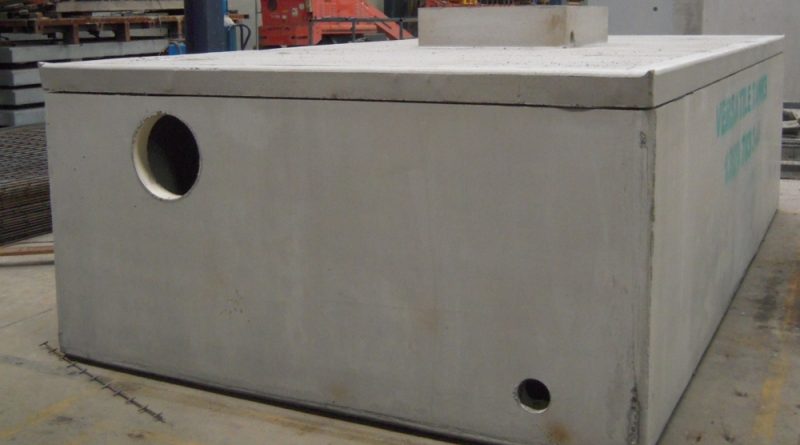Storm Water Tanks, also called Detention Tanks, or OSD tanks (Onsite Detention Tanks), are big containers that collect and store rainwater (stormwater) running off lawns, streets, and other surfaces.
An OSD tank is typically used as part of an effective drainage system that may help manage the flow of run-off of stormwater entering water bodies like rivers and lakes. Run-offs can lead to environmental problems, particularly when it flows fast.
Stormwater can damage and erode several miles of the environment and homes of aquatic plants and animals, which is why it’s important to have the correct stormwater management plans in place. Run-offs can lead to massive issues of flooding.
An OSD tank is designed for ‘detaining’ water. It stores the water only for a short time. The tank is so designed to cause the water to run out, emptying the tank till the next rainfall and for a short time later. For preventing fast and immediate surges of run-offs, the OSD tank has a big inlet pipe and a smaller outlet for outflow. A typical concrete OSD tank is available in pre-set volumes and sizes.
The best benefit of the OSD tank is the help it provides to the stormwater drainage facilities in the locality through draining of limited amounts of water run-off during heavy downpours. It is not feasible to raise the capacity of current facilities of drainage to handle the heavy flow of water because of constraints of space and cost. This is why most local councils shift the responsibility for the run-off to new homeowners.
Put simply; the local council must determine whether a property requires an OSD tank and to what extent one needs it. Basically, the tank size is impacted by factors such as the size of the property, surface area of the roof, and other structures inside the property.
An OSD tank is an independent unit that is meant to function alone or as a detention/ retention system. It can function as a supplement to a retention tank that can fill up quickly during the rainy season. As regards this, the inclusion of a retention tank will provide more space to detain water when there is continual and repeated rainfall. One must submit the design of the proposed system to the local council to gain approval.
Stormwater drainage is gaining much importance as urban development progresses and environmental responsibility to deal with stormwater, especially in areas of heavy downpour, is a critical part of new developments.
The fact with rain is that water will flow according to the contours of the terrain where it falls. In urban areas, rains flow away from roofs of commercial buildings, houses, and apartments and even away from paved surfaces like roads, driveways, and paths. Wherever be the run-off, water will finally end up in drains for stormwater discharge.
As opposed to sewage, stormwater is typically not treated before being discharged into the sea or wetlands, or waterways. This implies that stormwater carries anything and everything in its path. Thus, it transports all kinds of things such as chemical pollutants or sediments into areas of water catchment. When stormwater is not dealt with properly, it amounts to a loss as proper treatment is required for the objective of recycling.
On-site water detention
To slow the flow of stormwater into catchment areas, especially in areas vulnerable to flooding, two important techniques of stormwater detention (on-site) and stormwater absorption (on-site) are used.
An OSD tank permits the temporary storage of runoff of rainwater in order to reduce its impact of flooding through the municipal stormwater drains.
Types of OSD
There are 2 kinds of OSD TANK: for above-ground storage and below-ground storage.
● Below ground storage
Such an OSD tank comprises a huge underground concrete water tank that may be installed below the driveway or pathway of a development property. Such concrete tanks are designed to collect stormwater and slowly release it at a controlled rate so as to avoid flooding or erosion of downstream areas. The main aspect of maintaining such tanks is to ensure that their trash screen and discharge control outlet are not clogged or blocked. Another point to note is that technicians doing maintenance of underground tanks should have training for working in confined spaces.
● Above ground storage
With regard to above-ground OSD’s, architects, builders, and developers will work along with a landscape architect to help in designing and blending the above-ground OSD tank matching with the landscape. This makes for seamless integration of the tank with the surrounding garden.
Though there are several modes of integrating above-ground OSD tanks within a garden, all will usually include a sloping grassed area within retaining walls or/and front garden to store the water detained temporarily. One of the advantages of above ground OSD tanks is that they can include aesthetic features like water fountains.
Points to note
No matter what kind of OSD tank is used for the detention of stormwater, there are a few things you have to do:
● Check with the local council about what kind of OSD tank is suitable
● Collaborate with a structural engineer for proper design of the tank, particularly for underground OSD.
● Tie up with landscape architects, especially for above-ground OSD.
In sum, these are the uses of OSD tanks. They help store stormwater and release it gradually to the municipal sewer to avoid flooding during heavy rainfall.

